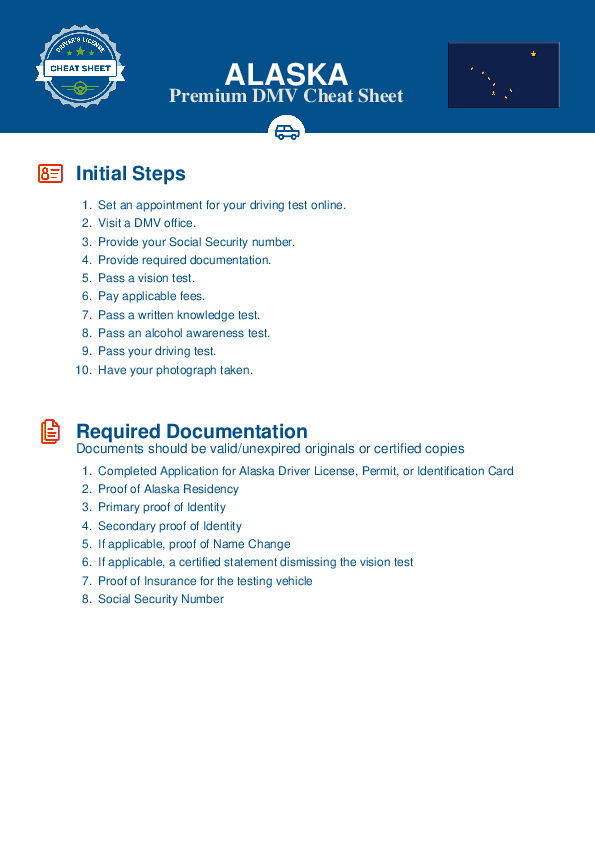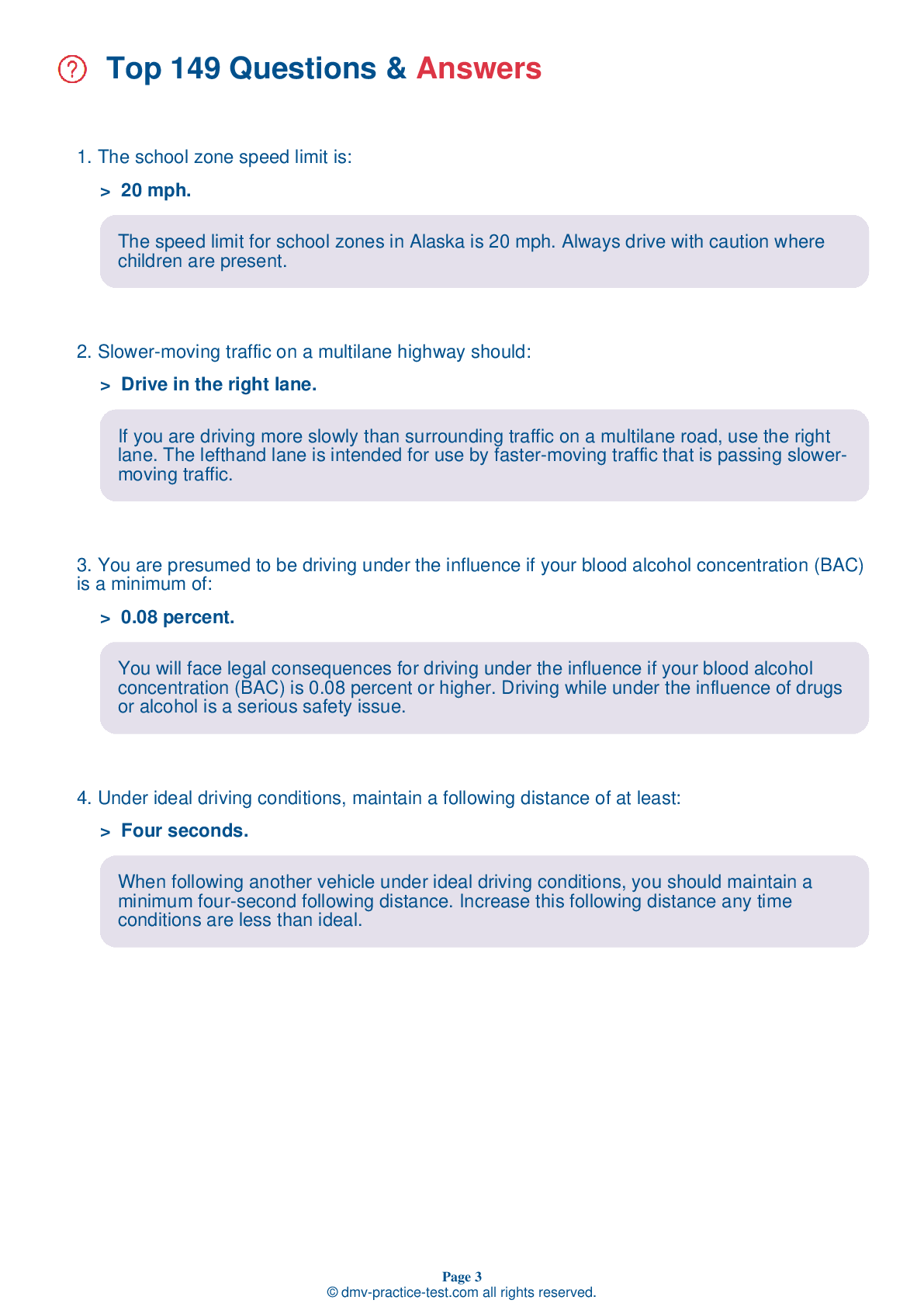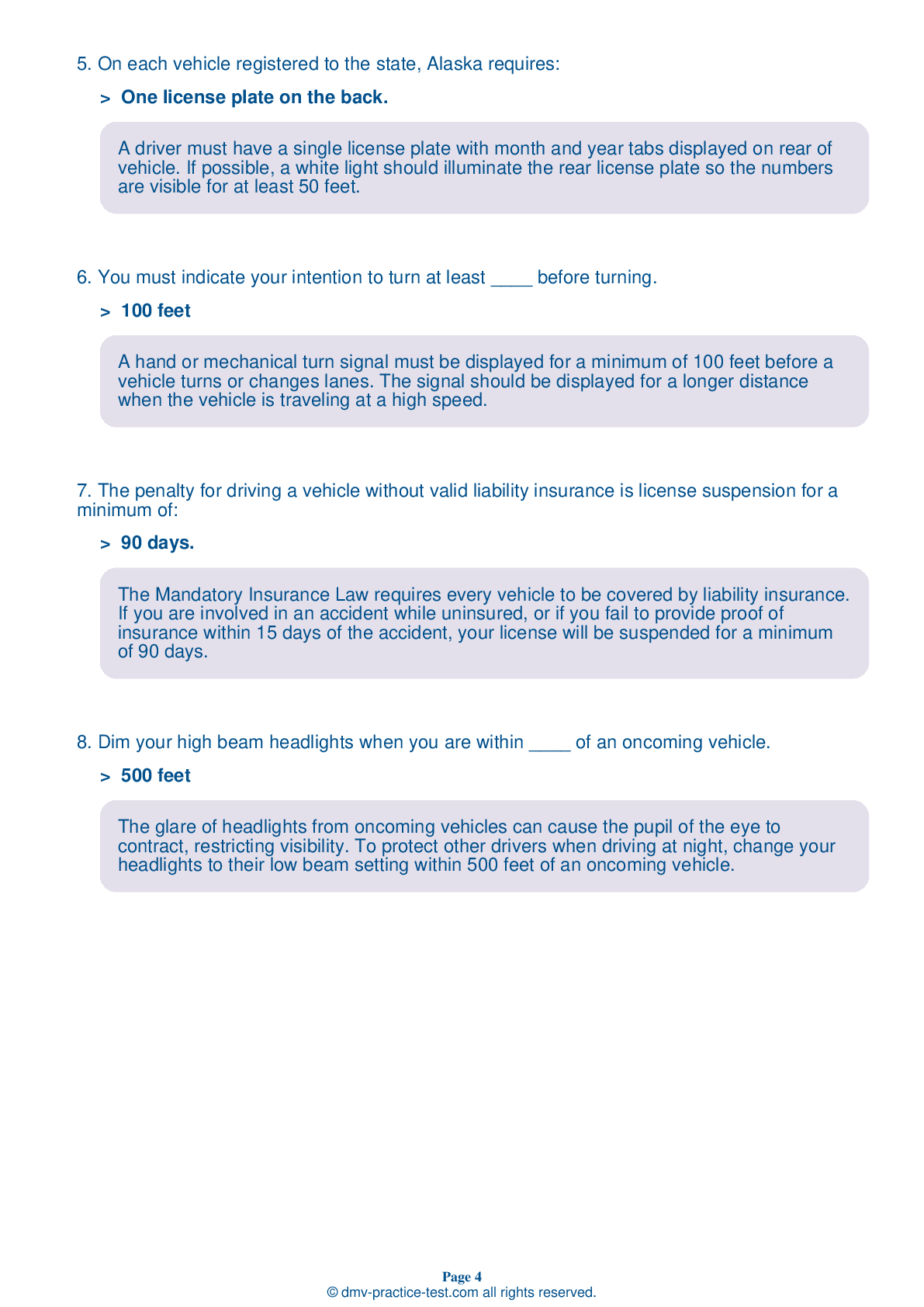FREE Alaska DMV Practice Test #1
This Alaska DMV practise tests has just been updated for January 2025. It contains questions based on the most essential traffic signs and limitations from the Alaska Driver Handbook for 2025. Use actual questions that are very close (often identical!) to the DMV driving permit test and driver's licence exam to prepare for the DMV driving permit test and driver's licence exam.
To help you recall the topics, each practise test question includes a suggestion and explanation. The written component of the official DMV test will include questions about road rules, traffic signs, and driving statutes, as well as information from the Driver Handbook.
To get the required passing mark, you must correctly answer 16 out of 20 questions. Take our DMV practise exam to help you prepare for your Alaska instruction permit or driver's licence.
The DMV exam is available in multiple languages.
Using any form of testing aid will result in an automatic failure, and the DMV may take further action against your driver's licence, so don't do it.
1 . Your brake lights tell other drivers that you:
Your vehicle's brake lights indicate to other drivers that you are slowing down or stopping. Your brake lights should always be in working order when you are driving on any roadway.
2 . You are approaching a flashing red traffic light. You should:
Treat a flashing red traffic signal the same as a stop sign. Come to a complete stop behind any crosswalk or stop line. Look in all directions for approaching traffic and pedestrians and proceed only when it is safe to do so.
3 . This sign means:

This sign indicates that the road that you are on intersects with a divided highway. A divided highway is two one-way roadways separated by a median or guide rail.
4 . If there are two railroad tracks next to each other:
If there are two railroad tracks next to each other, watch for a second approaching train after one train passes. Do not begin to cross the tracks until you’re sure no train is approaching from either direction on either track.
5 . You must stop for a school bus:
You must stop when approaching a school bus that is displaying flashing red lights while stopped to pick up or drop off children. On a two-lane road, traffic moving in both directions must stop and remain stopped as long as the red lights near the top of the bus are flashing and/or the stop arm on the left side of the bus is extended.
6 . A pedestrian is crossing the street in a crosswalk. You must:
Pedestrians have the right-of-way in marked and unmarked crosswalks. Do not make a pedestrian yield to your vehicle. The motorist must always yield to the pedestrian.
See the exact questions that will be on the 2025 Alaska DMV exam.
99.2% of people who use the cheat sheet pass the FIRST TIME
LT gives us an insight on how the cheat sheet provided her with all the study questions she needed before taking her test.
Joe initially studied with the handbook and failed his test, he eventually found us online, studied and pass his test the first time around.



